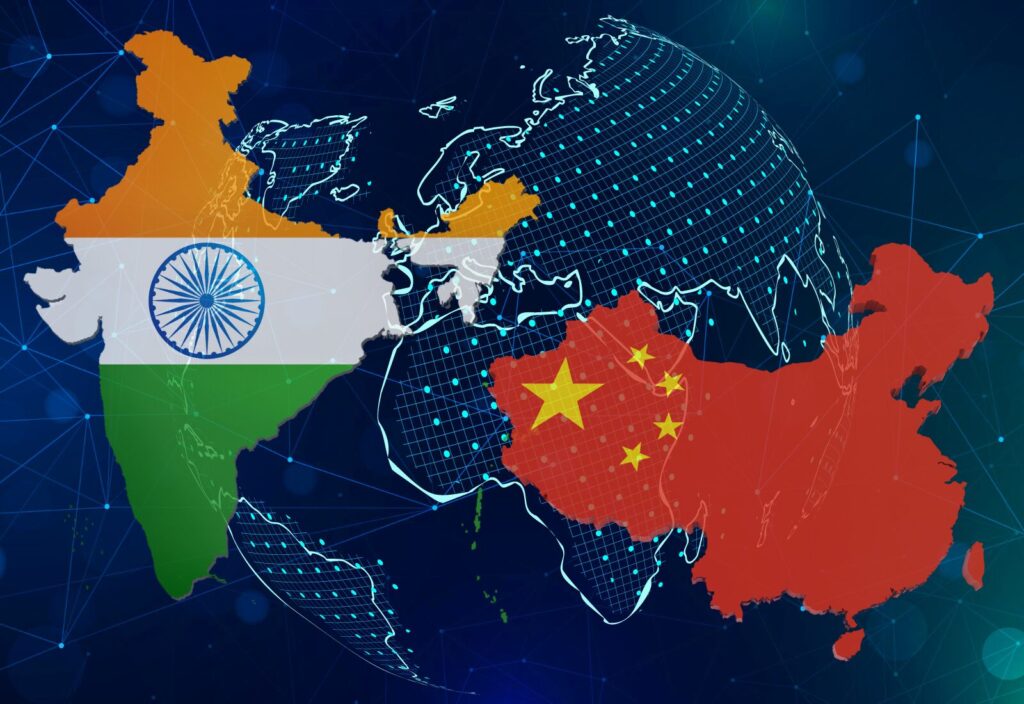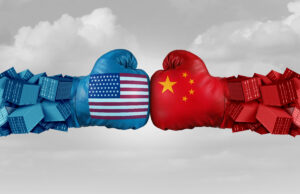Pivoting from China to India
Recently, India’s Consul General K. Srikar Reddy met with a group of business leaders in Salt Lake City, Utah at World Trade Center Utah to discuss increasing business relationships between Utah and India. Mr. Reddy is based in San Francisco and covers the western US. He was previously posted in Africa, the Middle East, and Germany. During the Q&A session, I asked Mr. Reddy this question: “What type of messaging is the Indian government using to promote India ahead of China?”
Some people in the group thought I led with too difficult a question, but to me, this is the fundamental issue regarding the growing India-US relationship. Mr. Reddy indicated that the India-US relationship is at its highest level since 1947, with President Biden and Prime Minister Modi reciprocating visits to each other’s country in 2023.
India recognizes its opportunity and has been making strides toward making its business environment more friendly. But how prepared is India from their viewpoint, and how well can they articulate that messaging to their potential partners?
Mr. Reddy answered me with these key points:
India is the World’s Largest Democracy
India is not only a democracy. India is the largest democratic country in the world. This matters from a geopolitical standpoint for several reasons, especially because China is as large as India but certainly not a democracy. The Indian government is much less likely to act in an autocratic manner than China is. With democratic values and a democratic governance structure, India is much more in lockstep with the US. This matters for businesses seeking reasonable laws and regulations and the reasonable enforcement of those laws and regulations.
Almost All of India’s Sectors are Now Open to Foreign Investment
Only nine Indian business sectors are closed to foreign investment: lotteries, chit funds, trading in transferable development rights, manufacturing of tobacco and tobacco substitutes, gambling and casinos, Nidhi Companies, certain real estate and infrastructure construction, atomic energy, and certain railway projects. In contrast, China’s negative list (with restricted and prohibited sectors) is 27 if a company is established in a free trade zone. Restrictions in China continue in finance, media, agriculture, mining, transportation, IT, real estate, education, health, social work, and scientific research.
India’s Workforce is Large and Young
China’s workforce is large, but it is older and more skilled than India’s and consequently no longer a bottomless source of cheap labor. Today, India’s labor costs are five times less than China’s. And unlike China, India’s working class demography skews 10 years younger than China’s.
India’s Government Continues Making Meaningful Business Reforms
In China, the government routinely promises to make its business sectors more attractive to foreign companies while simultaneously passing laws like its Counter-espionage Law. India continues to make reforms to ease cumbersome business processes, including reducing its corporate tax rates. China’s stringent company law requirements take effect July 1, 2024, which affect every foreign-invested company in China.
India and the US Share Technology
India and the US trust each other on the responsible development of advanced technologies. The US-India initiative on Critical Technology (iCET)’s inaugural meeting was held in January 2023. iCET is focused on all types of advanced technologies, including artificial intelligence (AI), quantum, wireless, and semiconductors. It is particularly noteworthy that iCET also encompasses defense-related technologies.
Addressing India’s Challenges
Though India’s democratic framework, youthful demographic, and progressive reforms underpin its growing competitive edge against China, several challenges remain that could impact India’s trajectory as a global business leader. Understanding these hurdles is important for companies considering India as a strategic partner or investment destination.
India Infrastructure and Bureaucracy
One of India’s most significant challenges is its infrastructure. Despite improvements, there’s a considerable gap in the country’s infrastructure development compared to global standards, and this impacts transport, power supply, and digital connectivity. This gap can impede operational efficiency and increase costs for businesses.
Moreover, the Indian bureaucratic system, known for its complexity and red tape, still can be a formidable barrier. Though reforms have been initiated to simplify processes, navigating the bureaucratic labyrinth remains a daunting task for foreign investors, often leading to delays in project implementation and increased compliance burdens.
India Regulatory Uncertainties
Though improving, India’s regulatory environment is still often marked by unpredictability and frequent changes. This regulatory flux can pose a risk to businesses, affecting long-term planning and operational stability. Intellectual property rights enforcement and contract enforcement remain areas of concern, impacting investor confidence.
India’s Skill Gap and Labor Market Rigidity
Despite its large and young workforce, India’s education system has struggled to keep pace with the evolving skill requirements of modern industries, leading to a mismatch between job seekers’ qualifications and the needs of employers. Additionally, labor market rigidities, owing to stringent labor laws, can complicate hiring and layoff processes, in turn negatively affecting business flexibility.
India Environmental and Social Considerations
India faces significant environmental challenges, including pollution and water scarcity, which can impact businesses directly and indirectly. Social issues, such as income inequality and access to healthcare and education, also pose challenges to sustainable economic growth and social stability.
Navigating India’s Geopolitical Landscape
India’s non-aligned policy and strategic autonomy, presents a complex landscape for international businesses, especially those from the United States. India’s relationships with its neighbors and other global powers can influence its trade policies and economic alliances, impacting foreign investment flows.
Conclusion
India’s consul general made no apologies for encouraging companies to choose India over China. And as China continues to retrench and look inward, the global business community will continue to search beyond China for a suitable replacement.
India may not be ready to absorb all opportunities available to it, but as the world’s largest democracy with ever-increasing ties to the West, it is not going to let this opportunity pass it by. We expect additional reforms to attract business and especially investment to India. The country’s young workforce will continue to increase in education and experience levels. We will continue to follow India’s development in technology, infrastructure, workforce development, and other key emerging areas as India charts its own course forward as a leader in the Asian Pacific region.
The strengthening ties between India and the US, particularly in technology collaboration, underscore the vast potential for fruitful partnerships between Western and Indian companies. Businesses looking to expand or diversify their international footprint should be closely watching India’s trajectory. By leveraging India’s strengths and navigating its challenges with informed strategies, companies can tap into a vibrant market poised for growth and innovation. India opportunities abound, and the time to engage with India is now.

























